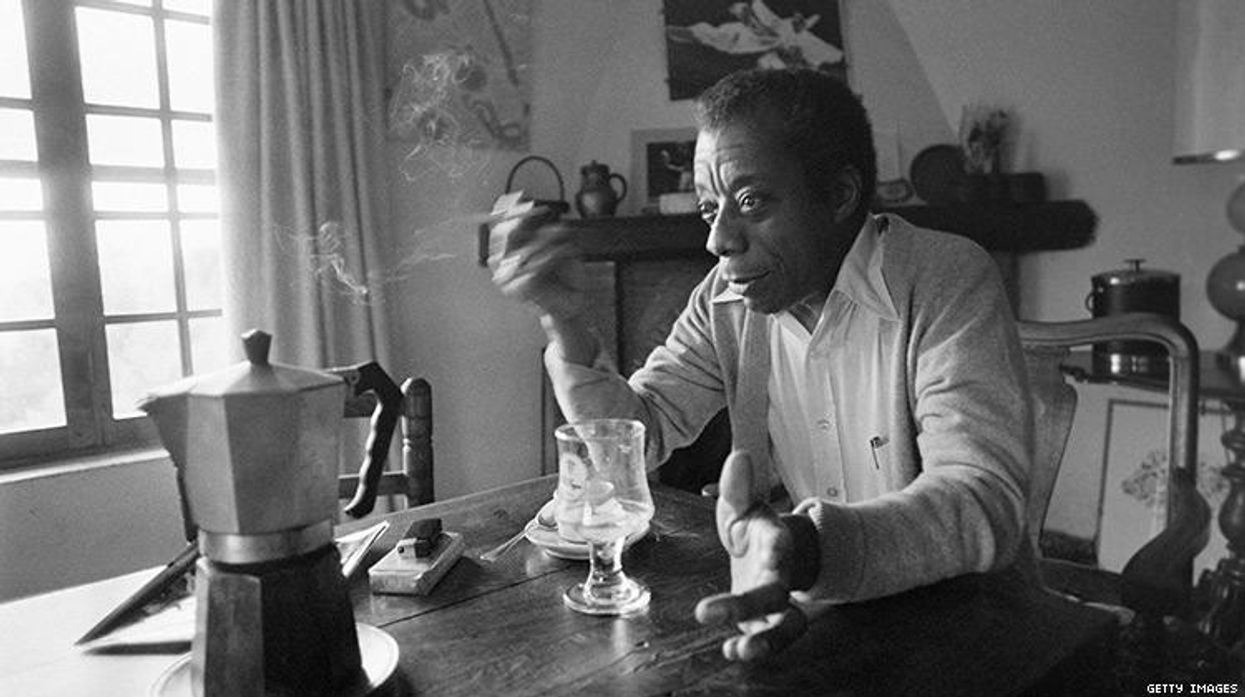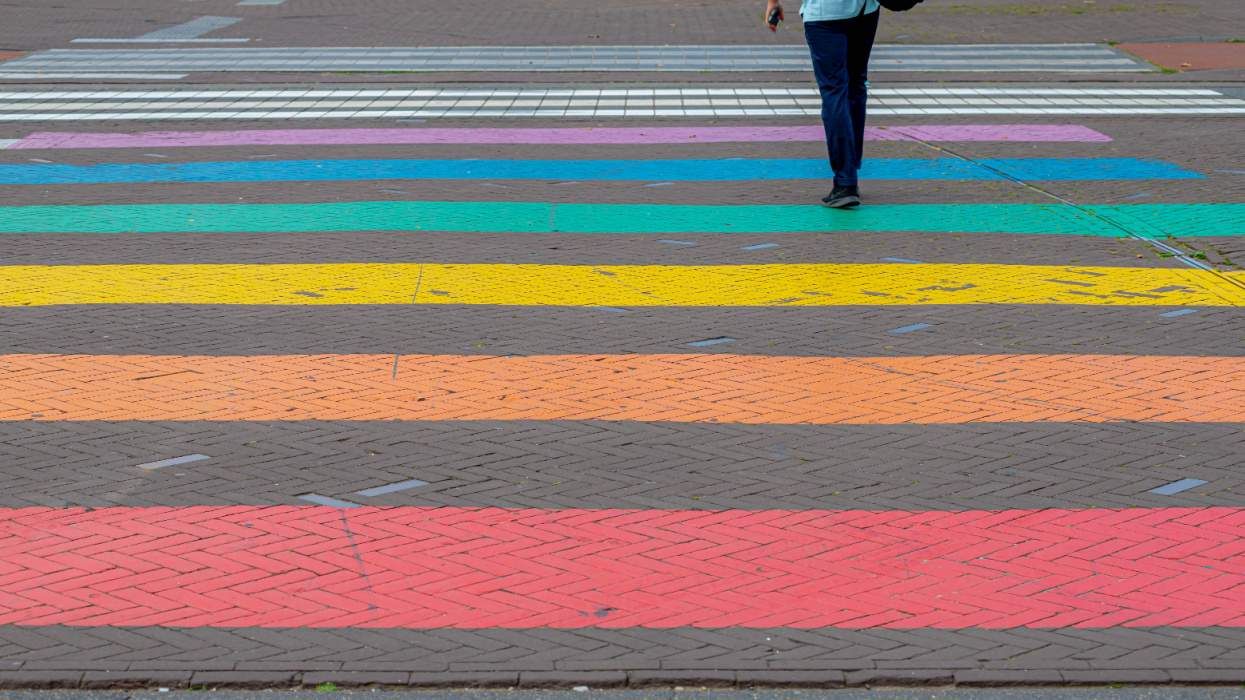The childhood home of James Baldwin is now in the National Register of Historic Places, establishing the ordinary looking building as having played a key role in the shaping of American culture. The building joins several other LGBTQ+ landmarks in New York City in receiving historic designations this year.
Built in 1890, Baldwin lived in the small four-story building at 137 West 71st Street from the mid 1960s to the late '80s. You'd never guess there's anything significant about the grey, brick walk-up just from looking at it.
"Seeing James Baldwin's NYC residence listed on the National Register of Historic Places is the realization of our mission, in part, to increase [LGBTQ+] representation on this important official inventory of sites and to formally recognize the U.S. home most closely associated with Baldwin, a pivotal voice of 20th century America," Amanda Davis, project manager at the NYC LGBT Historic Sites Project, said in a statement.
Baldwin had a complicated relationship with what we would today recognize as the LGBTQ+ community. As a young man, he lived in Greenwich Village, where even in the 1930s and 40s there was an air of comparative sexual freedom. That was followed by many years in France, during which time he published his most famous novels: Go Tell It On the Mountain in 1953 and Giovanni's Room in 1956, both of which featured gay characters.
Returning to America in the early 60s, he wrote Another Country, which touched on both same-sex and interracial relationships. Baldwin himself had experience with both, but according to the NYC LGBT Historic Sites Project, "he generally eschewed labels and did not self-identify as gay."
But he did speak about homosexuality, particularly toward the end of his life.
"A man can fall in love with a man; a woman can fall in love with a woman," Baldwin said in 1987. "There's nothing anybody can do about it. It's not in the province of the law. It has nothing to do with the church. And if you lie about that, you lie about everything. And no one has a right to try to tell another human being whom he or she can or should love."
In the 71st St. building, Baldwin occupied a ground-floor apartment and housed his mother, sister, and her children on upper floors. It was a gathering place for many notable Black literary figures throughout the 70s and 80s, and Toni Morrison lived in the building for a short period.
With its designation on the National Register of Historic Places, the building gains yet another layer of recognition. Earlier this year, Governor Andrew Cuomo announced that the Upper West Side site would also be nominated for a listing on the state's register, noting in a statement that "Baldwin transformed and continues to transform discussions about race and sexuality in America and abroad."
It also enjoys local historic designation, with the Landmarks Preservation Commission designating Baldwin's home as a NYC landmark this past June.
That came in a wave of historic recognition for LGBTQ+ landmarks in New York. The Commission also selected the Gay Activist Alliance Firehouse, which was built in the 1880s and used to organize protests by the Gay Activist Alliance in the 1970s.
Caffe Cino was also designated as a historic landmark. Another 19th-century structure, the cafe was home to experimental theater works off-off-Broadway. Also given protection was the LGBT Community Center, home to queer community events since 1983, and the Women's Liberation Center, another former firehouse used to organize protests starting in the 1970s.
Audre Lorde's house on Staten Island was noted as historic as well.
RELATED | James Baldwin's Blueprint For the LGBTQ+ Rights Movement






























